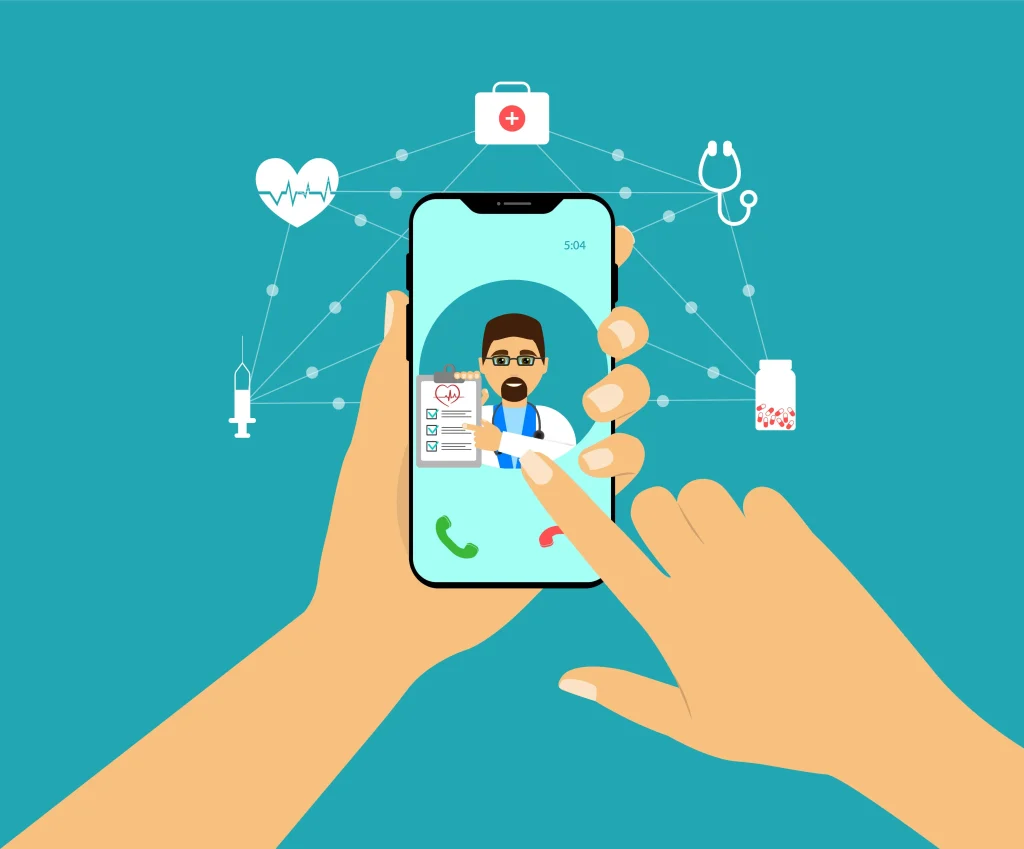Implementing telehealth is a great addition to your practice if you want to expand your service offerings and client base—and even reduce your own stress as a physician. By moving towards a committed telehealth partnership, you can integrate many parts of your business under a single, streamlined, multi-function platform. Virtual visits, billing, patient intake, and even credentialing new doctors can all be done faster and more securely.

But are you ready to make the leap towards telehealth? Do you know what you’ll need, the steps you’ll need to take, or even the many ways that telehealth can boost your business? If you’ve been considering a foray into telehealth but you don’t know where to start, we’ve put together a primer on getting started.
Why use Telehealth in the First Place?
Telehealth offers a wide range of benefits and, while we’ve gone into detail in the past, here’s a brief overview. Essentially, telehealth allows you to:
- Expand your practice to find patients outside your geographical region. This is an especially helpful perk if you’re a specialist, as the wait for traditional referrals can be quite long and people are turning to virtual visits to see specialists sooner.
- Reducing stress and the risk of burnout by automating many of the mundane administrative tasks in your office, including billing, patient intake, filing, employee searches, and more. This reduces the nonmedical workload on you and can help you feel better about going into work each day.
- Connecting with insurance providers, specialists, and other physicians is significantly easier when done through a virtual platform.
- Greater access to chronic care, pain, and low mobility patients. Virtual visits allow people to avoid highly congested waiting rooms and reduce the spread of infectious diseases as a result.
Get Started: Telehealth Implementation Checklist
Physical Equipment Upgrades
Telehealth will likely require some upgrades in terms of your clinic’s technology. Since virtual visits will need internet connectivity to collect the useful information you’d otherwise gather in person, you will want to make sure you have:
- High-speed, reliable internet connection
- Computers equipped to handle high-speed internet, voice, and video equipment
- High definition monitors to see your patients clearly
- Webcams with high resolution so patients can see you clearly
- Audio equipment like headsets and microphones
- A VPN to ensure patient data is secure during transmission
If you’re planning on being a fully virtual physician or spending most of the day a few times a week running virtual visits, you may also consider investing in an ergonomic chair to help with your posture. Since sitting all day has negative health consequences, you could also use a standing desk to preserve your own health while helping others with theirs.
HIPAA Compliance
While you’re used to HIPAA compliance with your physical practice, there are extra regulations regarding digital transmissions. You will need to familiarize yourself with:
HIPAA regulations about sending SMS messages to your clients. While texting in healthcare is a great way to remind patients of upcoming appointments and yearly check-ups, there are some potential legal pitfalls if you’re not careful:
- You cannot mix marketing and patient care messages in the same communication
- Patients have to opt in to all SMS communication and need a clear method of opting out.
[in-line CTA] There’s a lot to know about HIPAA compliance for virtual visits, but a well-developed telehealth partner can help you navigate compliance and legal matters.
Staff Training & Hiring
Any time you add a new system or process to your business, the proper training for your staff is crucial to getting the process to stick. When adding a new system, communicate to your team throughout the process, and offer training over multiple sessions instead of trying to train everyone on the entire platform at once.
When it comes to telehealth, you may need to add to your team to offer additional virtual visit hours or be your practice’s telehealth champion. Hiring a new physician or medical professional and verifying all their credentials can be arduous, but the right telehealth platform actually makes this process easier. By creating a virtual verification process for new hires, you can get vital information back quickly and completely. Less human error means greater accuracy and faster completion, which is a huge benefit to getting your practice running quickly.
Consider Backend Infrastructure
Telehealth works best when everything is streamlined and efficient. ViTel can help by simplifying your employee training, patient intake, and billing processes while improving speed and accuracy. Ensuring that you have these mundane but critical processes in place when you start is vitally important.
Don’t Venture into Telehealth Alone
You can set up virtual visits with your patients, but without a robust infrastructure of medical professionals, you’re going to have a hard time. ViTel offers training and systems for billing, credentialing, referrals, and more. With ViTel as a partner, we can turn your brick-and-mortar into a click-and-mortar medical practice.
Additionally, we can help make the patient experience better, by providing real-time information, better communication, and improved access to your patients. In all, starting telehealth might seem daunting, but the benefits are too great to ignore. With ViTel in your corner, you’re off to a great start and we’ll support every step in the telehealth world you make.
Contact us to see the difference an experienced, dedicated telehealth partner can make.







